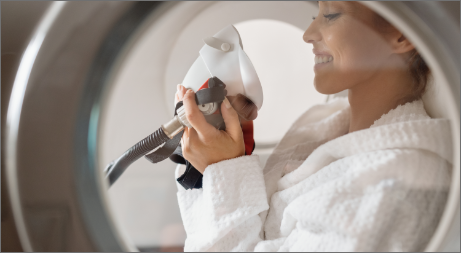Discover the transformative potential of Hyperbaric Oxygen Therapy (HBOT) as a promising adjunct in the battle against Alzheimer's disease. This pioneering treatment harnesses the power of increased oxygen levels in a pressurized environment, aiming to enhance cognitive functions and alleviate symptoms associated with this debilitating condition. Join us in exploring the exuberance of hope and innovation cultivated in Arya Nagar, Rohtak, Haryana, India, as we delve into the science and testimonials surrounding this groundbreaking therapy. Uncover the latest advancements and personal stories that illuminate the path towards improved quality of life for those affected by Alzheimer’s.
Hyperbaric HBOT: Oxygen Therapy’s Exuberance in Alzheimer’s Care | Arya Nagar, Rohtak, Haryana, India
Beneath pressure, exuberance blooms in healing chambers.
Hyperbaric Oxygen Therapy (HBOT) is a medical treatment that involves breathing pure oxygen in a pressurized chamber. This increases the amount of oxygen in the blood, which enhances the body's natural healing processes. By delivering high levels of oxygen to tissues that are deprived of it, HBOT promotes faster healing, reduces inflammation, and supports overall recovery. The therapy is administered in specialized hyperbaric chambers, either as a monoplace (single-person) or multiplace (multiple-person) unit, and is overseen by medical professionals to ensure safety and effectiveness. HBOT is utilized for various medical conditions and aims to improve patient health and well-being.


Investigating exuberance in Alzheimer’s disease unveils hidden truths
Exploring the nuances of Alzheimer's disease requires a meticulous examination of its complex pathology and varied symptoms. Alzheimer's is a progressive neurodegenerative disorder characterized by memory loss, cognitive decline, and behavioral changes. The disease primarily affects older adults, with early symptoms often mistaken for normal aging. Pathologically, Alzheimer's is marked by the accumulation of amyloid plaques and tau tangles in the brain, which disrupt neuron function and lead to cell death. Genetic factors, such as mutations in the APOE gene, and environmental influences contribute to its development. Early diagnosis through cognitive tests and brain imaging is crucial for managing the disease. Current treatments focus on symptom management and slowing progression, as there is no cure. Ongoing research aims to uncover new therapeutic targets and improve early detection methods. Understanding Alzheimer's in-depth fosters better care strategies and hope for future advancements in treatment.
Hyperbaric oxygen therapy HBOT alters Alzheimer’s trajectory enhancing neural vitality
Hyperbaric Oxygen Therapy (HBOT) may offer benefits in managing Alzheimer's disease by enhancing brain health and function. HBOT involves breathing pure oxygen in a pressurized chamber, significantly increasing oxygen levels in the blood and brain tissues. This heightened oxygenation can reduce inflammation and oxidative stress, both of which are implicated in Alzheimer's progression. Additionally, HBOT can stimulate the growth of new blood vessels and improve overall blood flow to the brain, potentially enhancing cognitive function. Some studies suggest that HBOT might also promote the removal of amyloid plaques, a hallmark of Alzheimer's pathology. While HBOT is not a cure for Alzheimer's, it represents a promising adjunctive treatment that could help slow disease progression and improve quality of life for patients by supporting brain health and function.

Hyperbaric oxygen therapy enhances cognitive function in Alzheimer's patients through enriched oxygen levels
Hyperbaric Oxygen Therapy (HBOT) presents a promising adjunctive treatment option for Alzheimer's disease, leveraging its unique ability to enhance oxygenation and promote brain health. Through the use of a pressurized chamber, HBOT increases the amount of oxygen in the blood and brain tissues, which can play a crucial role in reducing inflammation and oxidative stress, both significant contributors to Alzheimer's progression. The therapy's potential to stimulate angiogenesis, or the formation of new blood vessels, ensures improved blood flow and nutrient delivery to brain cells, which can enhance cognitive functions and potentially slow down the degenerative processes associated with the disease.
Research indicates that HBOT might also assist in the removal of amyloid plaques, the abnormal protein deposits in the brain that are a hallmark of Alzheimer's pathology. By aiding in the clearance of these plaques, HBOT could help in mitigating some of the neurological damages caused by the disease. Furthermore, the therapy's impact on neuroinflammation and its ability to create a more favorable environment for brain cell survival and function provides a multi-faceted approach to managing Alzheimer's.
While HBOT is not a cure for Alzheimer's, its application could significantly improve the quality of life for patients by supporting overall brain health and function. Continued research and clinical trials are necessary to fully understand the extent of HBOT's benefits and to establish standardized treatment protocols. However, its integration into Alzheimer's treatment strategies holds promise, offering hope for slowing disease progression and enhancing the well-being of those affected by this challenging condition.
References
https://pubmed.ncbi.nlm.nih.gov/30215058/
